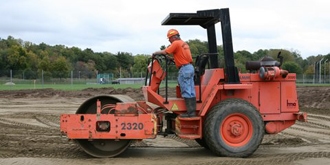Professional Septic Ohio - Trusted Septic Tank Specialists in Ohio
Professional Septic Ohio - Trusted Septic Tank Specialists in Ohio
Blog Article
Comprehensive Excavation Methods: Understanding the Basics for Success
The careful preparation, precise execution, and meticulous focus to detail needed in excavation projects require an extensive technique that incorporates different fundamental elements. The real mastery exists not merely in understanding these principles but in seamlessly incorporating them to navigate the intricacies of excavation jobs with skill.
Recognizing Excavation Task Planning

The first stage of any excavation task is the preparation stage, where critical choices are made that can considerably impact the result of the project. Comprehending the job scope, budget plan, and timeline restrictions is vital for developing a detailed excavation plan that makes certain the job's success.
One key element of excavation job planning is the advancement of an in-depth timeline that outlines the series of activities, turning points, and target dates. This timeline functions as a roadmap for the project group, enabling them to track development and make necessary modifications to make certain the job remains on timetable. Additionally, a well-defined budget that accounts for all costs, consisting of devices rental, labor expenses, and products, is essential for staying clear of price overruns and hold-ups. By carefully considering all these aspects throughout the drawing board, excavation tasks can be performed effectively and effectively, causing effective results.
Soil Analysis and Website Evaluation
Carrying out complete soil evaluation and website examination is a critical action in the preparation stage of any excavation task. Soil evaluation includes establishing the structure, framework, and buildings of the dirt at the excavation site. This information is critical for recognizing the dirt's bearing capability, dampness web content, and possibility for erosion, which are vital aspects in identifying the excavation techniques and equipment needed for the job.
Site assessment surpasses dirt evaluation and includes a more comprehensive assessment of the general site problems. This examination consists of identifying any possible threats, such as underground energies, ecological problems, or unsteady terrain, that might influence the excavation procedure. By completely reviewing the website, project supervisors can establish efficient excavation techniques that prioritize safety, effectiveness, and environmental management.
Using advanced technologies like ground-penetrating radar, dirt sampling, and drone surveys can improve the accuracy and efficiency of dirt evaluation and website examination. Investing time and sources in these initial actions can eventually save time and avoid costly delays or issues throughout the excavation procedure.
Equipment Option and Utilization
Effective excavation projects count heavily on critical tools option and usage to ensure optimum performance and efficiency. Selecting the best tools for the work is essential in maximizing performance and reducing downtime. Variables such as the sort of dirt, depth of excavation, and job extent play a considerable role in identifying one of the most appropriate equipment for the job available.

In addition to choosing the ideal tools, appropriate usage is key to job success. Operators has to be trained to handle the devices securely and successfully - dump truck companies in ohio. Regular upkeep checks and timely repairs aid protect against breakdowns and guarantee consistent efficiency throughout the job
Precaution and Rules Conformity
In the world of excavation projects, focusing on precaution and compliance with policies is critical to making sure a protected and lawfully sound operational Clicking Here environment. Precaution encompass a series of practices, consisting of conducting extensive site analyses, implementing proper signage and obstacles, and offering adequate security training for all employees entailed in the excavation procedure. Adherence to laws, such as OSHA requirements in the United States, makes sure that the excavation job satisfies the necessary requirements to safeguard employees, spectators, and the surrounding setting.

Surveillance Progress and Adjusting Approaches
Just how can forecast managers efficiently track the improvement of excavation jobs and adjust their methods as necessary to enhance outcomes? Surveillance progress is crucial for ensuring that excavation tasks remain on track and fulfill due dates.

Verdict
In final thought, grasping the principles of thorough excavation strategies is vital for the success of any kind of project. By comprehending project planning, analyzing dirt and website conditions, picking ideal devices, following safety laws, and keeping track of development, project supervisors can make certain a efficient and smooth excavation process. Implementing these Source approaches will bring about effective results and decrease potential risks or obstacles during the excavation task.
The preliminary stage of any type of excavation project is the preparation phase, where vital choices are made that can significantly affect the outcome of the job. Understanding the project timeline, range, and budget plan constraints is critical for producing a thorough excavation strategy that makes certain the project's success.
How can forecast managers efficiently track the development of excavation jobs and adjust their methods accordingly to optimize outcomes? By very closely keeping track of progression and being ready to adjust techniques, task managers can improve the overall success of excavation tasks.
By comprehending job preparation, examining dirt and site conditions, selecting suitable equipment, complying with safety policies, and keeping track of progression, project supervisors can ensure a efficient and smooth excavation process.
Report this page